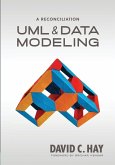This book provides you with a collection of best practices, guidelines, and tips for using the Unified Modeling Language (UML) for business analysis. The contents have been assembled over the years based on experience and documented best practices. Over sixty easy to understand UML diagram examples will help you to apply these ideas immediately. If you use, expect to use, or think you should use the Unified Modeling Language (UML) or use cases in your business analysis activities, this book will help you: communicate more succinctly and effectively with your stakeholders including your software development team, increase the likelihood that your requirements will be reviewed and understood, reduce requirements analysis, documentation, and review time. The first three chapters explain the reasons for utilizing the UML for business analysis, present a brief history of the UML and its diagram categories, and describe a set of general modeling guidelines and tips applicable to all of the UML diagram types. Each of the next thirteen chapters is dedicated to a different UML diagram type: Use Case Diagrams Activity Diagrams Interaction Overview Diagrams Class Diagrams Object Diagrams State Machine Diagrams Timing Diagrams Sequence Diagrams Communication Diagrams Composite Structure Diagrams Component Diagrams Deployment Diagrams Package Diagrams The next two chapters explain additional diagram types that are important for business analysts and that can be created using UML notation: Context Diagrams using Communication diagram notation Data Models using Class diagram notation These chapters are followed by a chapter that describes criteria for selecting the various diagram types. The final chapter presents a case study.








